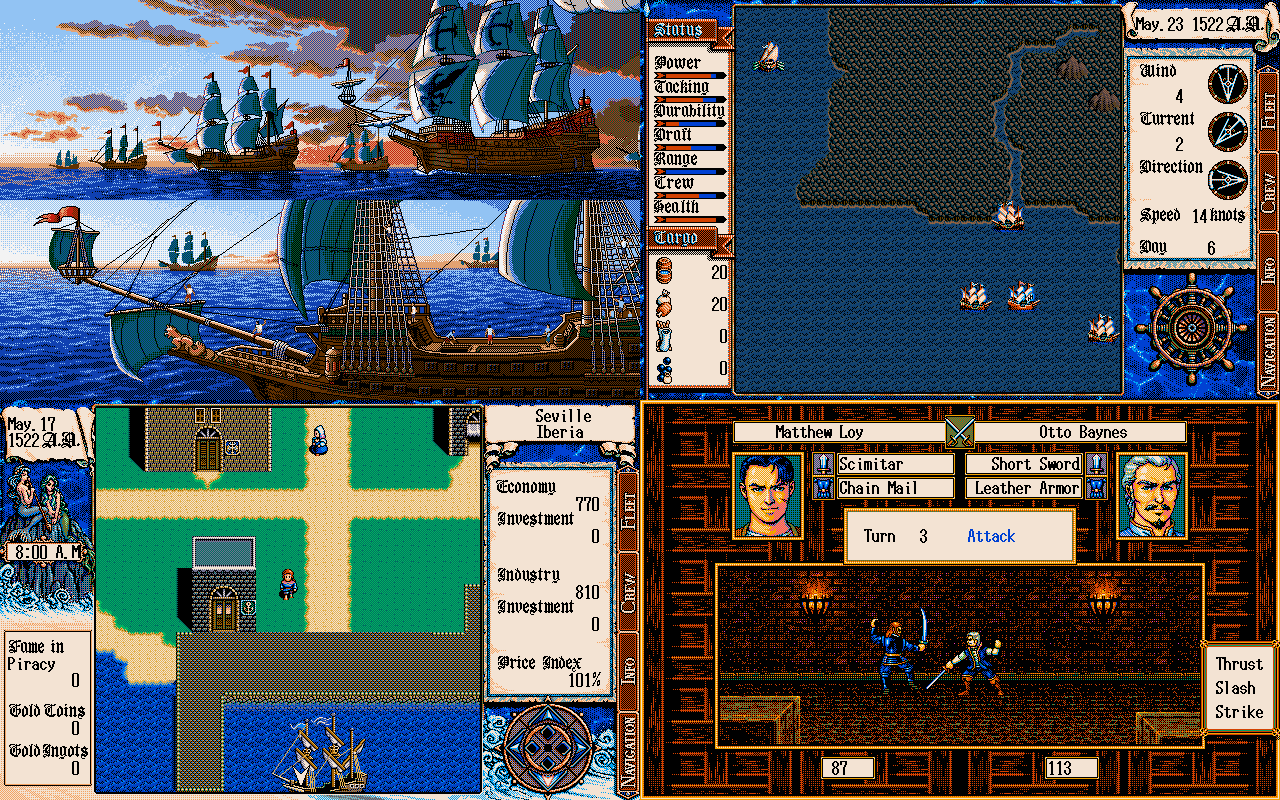Uncharted Waters: New Horizons (大航海時代II) is an open world RPG and simulation game from 1994, set during the Age of Exploration. Being the favorite game of my childhood, I’m remaking it using web technologies.
This is not meant to be even close to a full remake. I’m a web developer transitioning to doing consulting work — this side project lets prospective employers see my code.
 Screenshots of the original game
Screenshots of the original game
- Walking around in any of the 130 ports and entering their buildings.
- Sailing around the world map, where your speed takes into account all the factors of the original game.
This game can be played at https://johan.li/uncharted-waters-2/.
- Markets
- Trade goods, taking into account price indices.
- Shipyards
- Buy and remodel used ships.
- Pubs
- Recruit crew.
The game is made up of two parts:
- The game itself, a canvas element
- An interface/GUI, handled by React
The game loop reads State and Input, and updates the canvas element.
During gameplay, actions are called to update State. Actions themselves
can call updateInterface, which wraps React’s useState hooks.
Assets makes sure the images and game data is loaded before the game starts.
The two parts maintain their own local state, e.g., keeping track of the active menu item or where the NPCs are in a port. Input can also be handled locally, particularly when it comes to the interface.
Uses requestAnimationFrame().
State changes, such as reading Input and translating it to movement, don’t occur every frame — a check is performed to see if enough time has passed. Each frame does, however, interpolate movement for smoother graphics.
In contrast to most web apps, the game code is imperative. It doesn’t need to react to changes because it’s looped non-stop. While using a single Redux store for both the game and the interface seems to be a clean approach, it’s too slow if we want to maintain 60 fps.
The interface alone is too simple to warrant using Redux.
- Players need the ability to save and resume: State, and some local state, needs to be serialized and stored in localStorage, on a server, or both.
- Using a service worker so the game can be played offline.
- Pathfinding for NPC fleets.
